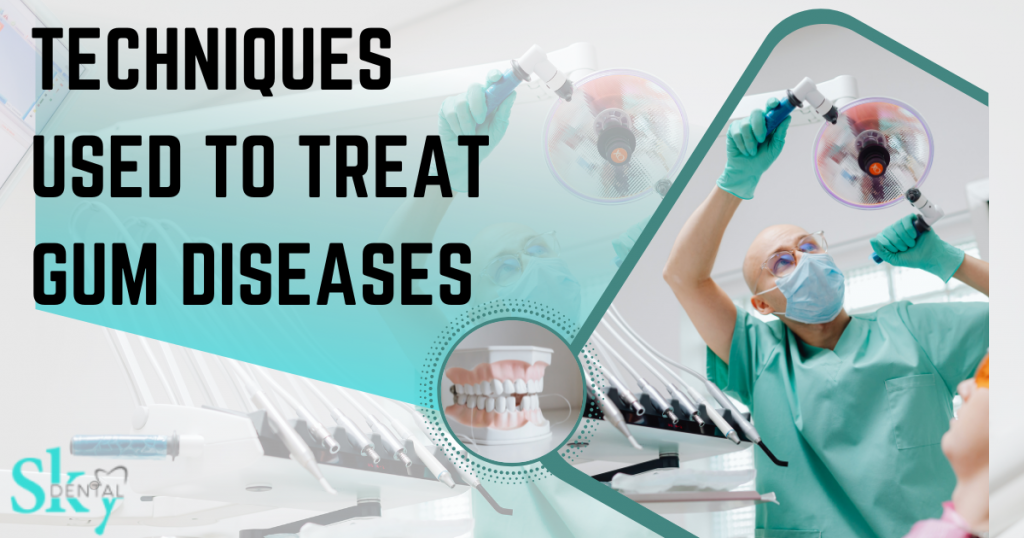Depending on the type, severity, and extent of the gum disease, it is treated utilizing a variety of techniques. When deciding on a course of treatment, your general health, age, and gum tissue condition will also be taken into account. In addition to poor nutrition, heredity, drugs, smoking, and clenching or grinding your teeth, plaque is the main cause of gum disease. Your periodontist will create a customized treatment plan for you after determining the stage of the disease that is present. Depending on the severity of your gum disease, surgical and non-surgical procedures may be used as treatments. For minor gum disease, nonsurgical treatments may be the only option. Surgery may be necessary alone or in combination with nonsurgical treatments for gum disease that is more severe. The following are the techniques used to treat gum disease.
NONSURGICAL METHODS
Tartar and germs that are present below the gumline can be eliminated using nonsurgical treatments scaling and root planning. Scaling is the process of cleaning teeth both above and below the gum line using specialized tools. With root planning, you can get rid of the rough places on the roots where bacteria can hide and infect you. Additionally, by smoothing the root, the gum is better able to reattach.
Dental Cleaning
Regular cleanings by a dentist or dental hygienist are known as professional dental cleanings also known as prophylaxis. Tartar and plaque are removed from all teeth’s surfaces, both above and below the gum line, during a professional cleaning. This lessens the risk of tooth decay and gum disease. Professional cleanings are typically performed every six months, though this can vary based on your particular needs.
Medications
No oral prescription is necessary for topical drugs, which are applied to the gum tissue. These mixtures support the healing of the gums by lowering inflammation, controlling bacterial development, and controlling tooth decay. Topical treatments come in the form of gels, rinses, and creams.
SURGICAL METHODS
Pocket Reduction Surgery
Infected gum tissue and disease-causing germs are removed during pocket reduction surgery, a periodontal procedure. Through surgery, “pockets” (spaces) that can collect tartar and plaque and cause gum disease are reduced. As a result, this surgery may aid in reducing the pockets’ depth and making it simpler to maintain their cleanliness.
Bone Grafts
Periodontal disease causes the bone to be lost, and bone grafts are used to restore it. In this procedure, artificial bone substitutes or bone taken from another part of the patient’s body are used. The graft is then applied to the area where the bone is being lost in order to promote the formation of new bone and prevent tooth loss.
Tissue Regeneration
A type of periodontal surgery called “guided tissue regeneration” is performed to encourage the formation of bone and gum tissue. This procedure involves covering the area of bone loss with a tiny piece of mesh-like cloth. Additionally, this procedure aids in preventing gum tissue from encroaching into the region of bone loss. This procedure is typically performed in conjunction with other periodontal operations.
Dental Implants
A type of surgery used to repair missing teeth is dental implant surgery. An artificial tooth (crown) is affixed to a metal post that has been implanted into the jawbone. Dental implants can stop bone loss and offer a long-term solution to tooth loss. But this procedure is typically only performed as a last option.
Conclusion
It’s crucial to get in touch with us for an evaluation if you experience any periodontal disease symptoms. Gum disease can be treated effectively if caught early enough to avoid major side effects like tooth loss. Our team at Sky Dental Clinic, one of the top dental hospitals in Vijayawada, is skilled in identifying and treating gum disease and can design a specialized treatment regimen to assist you in achieving and maintaining a healthy smile.


